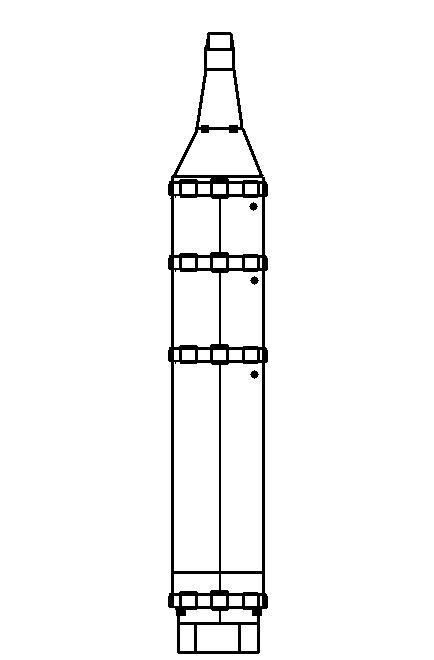 | ||
The R-27 Zyb was a submarine-launched ballistic missile developed by the Soviet Union and employed by the Soviet Navy from 1968 through 1988. NATO assigned the missile the reporting name SS-N-6 Serb. In the USSR, it was given the GRAU index 4K10. It was a liquid fuel rocket using a hypergolic combination of unsymmetrical dimethylhydrazine (UDMH) as fuel, and nitrogen tetroxide (NTO) as oxidizer. Between 1974 and 1990, 161 missile launches were conducted, with an average success rate of 93%. Total production was 1800 missiles.
Contents
The R-27 missiles were deployed on the Yankee I submarines, including the K-219.
R-27
R-27U(RSM-25)
R-27K
The 4K18 was a Soviet intermediate-range anti-ship ballistic missile (also known as R-27K, where "K" stands for Korabelnaya which means "ship-related") NATO SS-NX-13. The missile was a two-stage development of the single-stage R-27, the second stage containing the warhead as well as propulsion and terminal guidance. Initial submarine testing began on 9 December 1972 on board the K-102, a project 605 class submarine, a modified Project 629/ NATO Golf class lengthened 17.1m (formerly B-121), to accommodate four launch tubes as well as the Rekord-2 fire control system, the Kasatka B-605 Target acquisition system and various improvements to the navigation and communications systems. Initial trials ended on 18 December 1972 because the Rekord-2 fire control system hadn´t been delivered yet. After a number of delays caused by several malfunctions, test firings were finally carried out between 11 September and 4 December 1973. Following the initial trials, the K-102 continued making trial launches with both the R-27 and the R-27K, until it was accepted for service on 15 August 1975.
Using external targeting data, the R-27K/SS-NX-13 would have been launched underwater to a range of between 350-400 nm (650–740 km), covering a "footprint" of 27 nm (50 km). The Maneuvering Re-Entry vehicle (MaRV) would then home in on the target with a CEP of 400 yards (370 m). Warhead yield was between 0.5-1 Mt.
The missile system never became operational, since every launch tube used for the R-27K counted as a strategic missile in the SALT agreement, and they were considered more important.
Although the R-27K could fit in the launch tubes of the Project 667A (NATO Yankee class), the subs lacked the necessary equipment to target and fire the missile.
